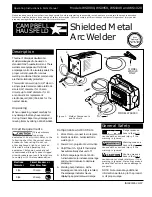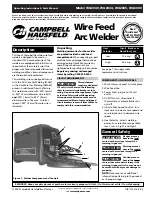
Questions? Call or Text +1-801-658-0015 •
43
The Micro Welder Experts
TIPS
•
Try the Classic waveform first as it is usually the easiest to adjust for ideal results. Some metals will weld
better using Triangle waveform or Square waveform. Try all three to see the differences.
• Always start low in energy and increase until the welds are strong enough and look good.
• In Triangle and Square modes, try setting the Length shorter or longer while keeping the power the
same.
• Compare the results.
•
Start with no agitation at first, then add it to see the changes in the results. Compare spot sizes and
weld quality for each agitation setting.
•
Start with the S ignition profile but try out the other profiles as well to find out which one suits
your techniques and application best.
“Aiming” the Electrode
Electrode placement in relation to the workpiece prior to the weld can have a large influence on weld quality and
behavior. Knowing the correct angle of approach and the correct place to touch the electrode can lead to more
consistent weld results and weld quality. See Electrode Placement Examples below.
TIPS
• Aiming the electrode perpendicular to the surface will deliver the most uniform weld spots and the best
smoothing.
• The molten metal can sometimes be “pushed” by aiming the electrode at a steeper angle (other than
perpendicular). Some metals (like silver) flow better than other metals when being welded and care
must be taken not to “dig holes”.
•
When adding fill material, the heat of the weld can draw the metal toward the electrode. Holding the fill
wire too close to the electrode can cause it to stick.
• The weld arc typically originates at the tip of the electrode, but if the shaft of the electrode is close to an
edge of the workpiece, arcing can occur in unintended areas and cause the electrode to stick.
Electrode Placement Examples
Perpendicular
Corner
Fill Wire
Edge
Overlap/Through






































